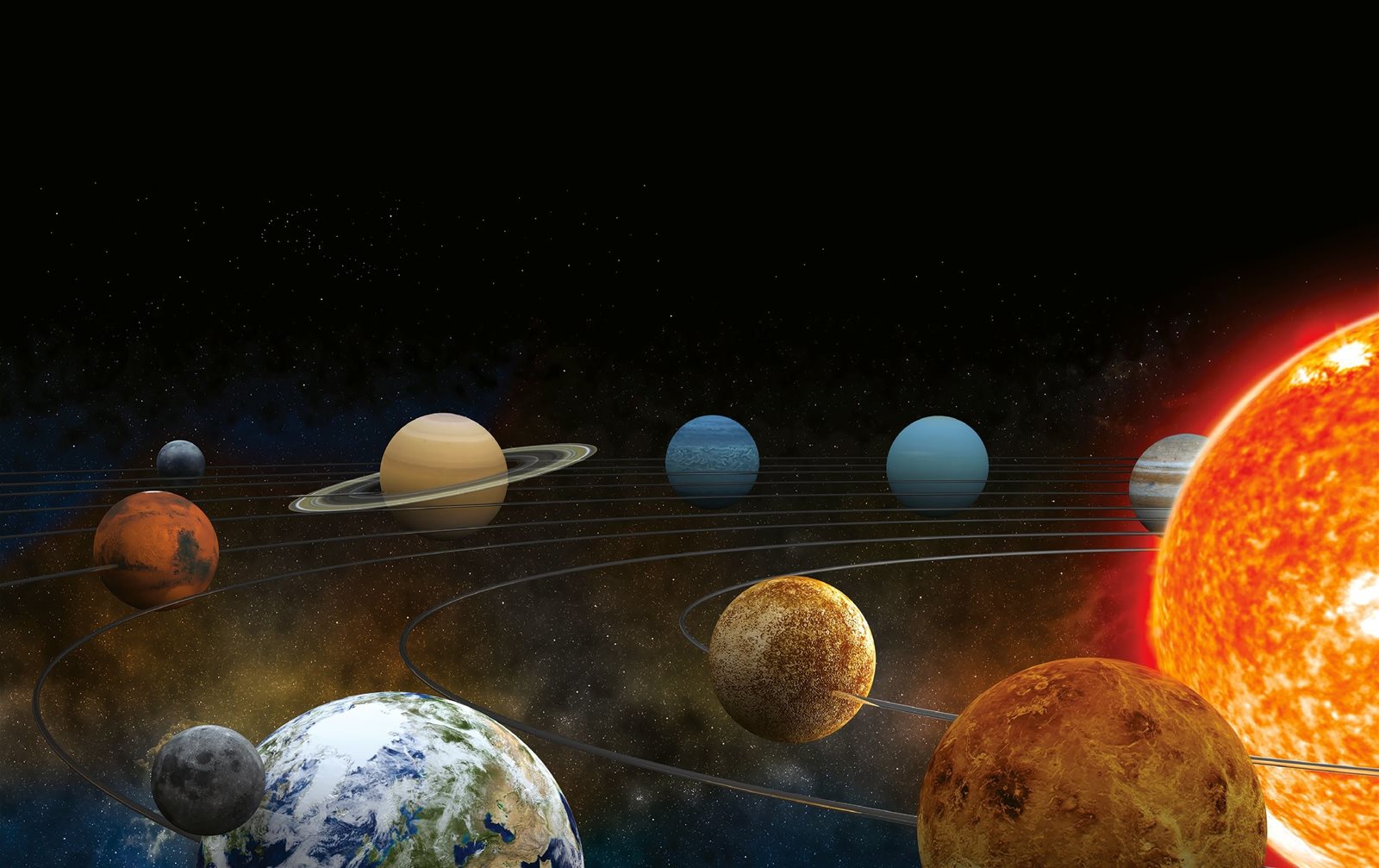
The Sun isn’t actually the centre of the Solar System
© Getty
One answer considered especially useful by astronomers is the barycentre, the point where the masses of the Sun, the planets and of all bodies in the system balance out. Imagine placing those masses on a huge platform supported by a single pin; slide the platform until you find the place where it remains perfectly balanced on the pin, and that is the barycentre. Now generalise your intuition to three dimensions. The barycentre is important because the equations of gravitation guarantee that it remains still while all bodies move in their orbits subject to their mutual attraction. Because the Sun is so massive, the barycentre lies relatively close to the solar core – in fact, it lies ‘inside’ the Sun about half of the time.
However, the balancing is very sensitive to distant masses: the 2003 discovery of Sedna, the planetoid in the outer reaches of the Solar System, ‘moved’ the barycentre by more than ten miles [16 kilometres]. Indeed, locating the barycentre requires our best knowledge of the masses and orbits of all the planets and their moons, which we obtain with careful astronomical observations and by bouncing radio signals off the spacecraft that we sent cruising through the Solar System.